Owning a smartphone or tablet without attaching a screen protector to the screen is nearly impossible. These transparent, strong material layers can protect the screen from scratches, cracks, and damage. It takes the impact of a fall, ensuring that the screen does not shatter instead.
So, how can businesses stock up on these fragile necessities? Keep reading to find out! This article will dive into all the facts about purchasing screen protectors in bulk.
Table of Contents
Overview of the global screen protector market
The 4 types of screen protectors
Necessary things to consider when stocking up on screen protectors
Final words
Overview of the global screen protector market
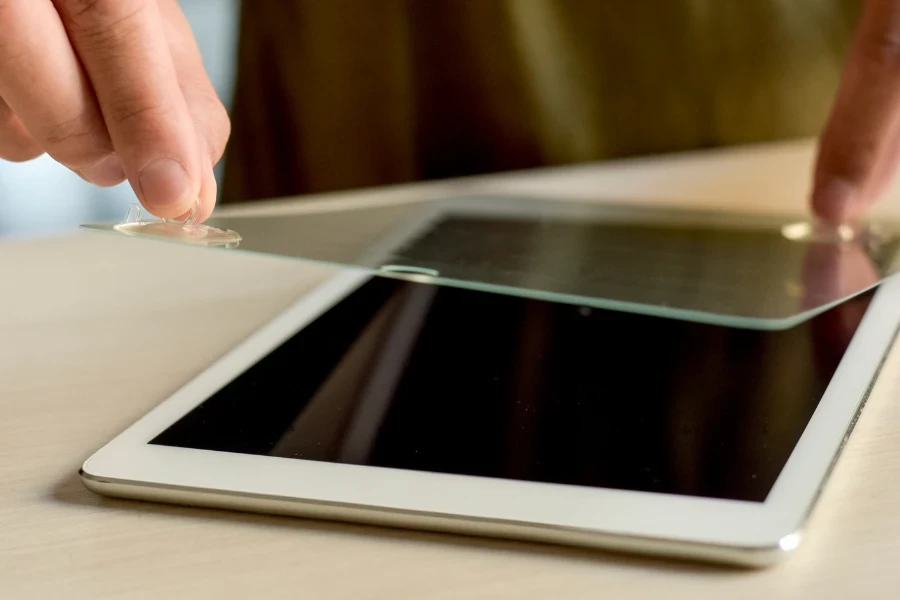
The global market size for the screen protector market was estimated at US $50.32 billion in 2022. Experts predict the market will hit US $96.70 billion by 2032, growing at a compound annual growth rate (CAGR) of 6.8% over the forecast period.
The key market drivers contributing to growth are the rising demand for premium smartphones and government initiatives for domestic manufacturing. Users are looking for quality screen protectors, as available data shows an average of 165,000 online monthly searches for them in 2023.
The 4 types of screen protectors
1. Liquid screen protectors
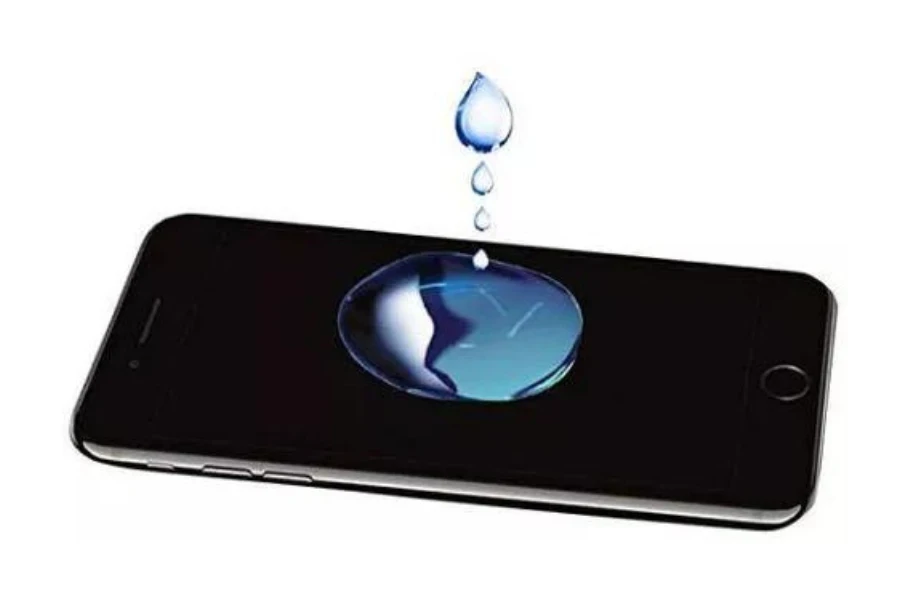
Liquid screen protectors are designed to be invisible and easy to apply. All a user has to do is pour the solution over the phone’s screen and leave it to undergo a 24-hour curing process. However, these protectors are safe to touch after ten minutes, so users do not need to worry about staying away from their phones.
What makes them so appealing to many users is the lack of annoying air bubbles that seem ever-present among other types of protectors. But because the protective layer is so thin, it allows for scratches on the screen’s surface. Also, consumers can remove them at will, as manufacturers design them to wear off over time.
2. Anti-glare screen protectors
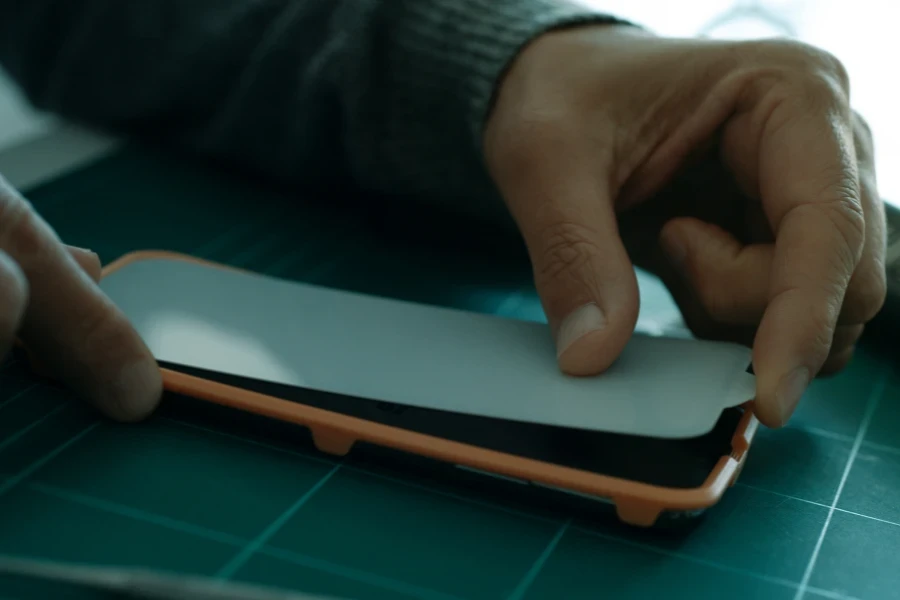
Anti-glare screen protectors use a matte coating, which allows for easy cleaning and minimizes the glare or reflections from the screen. As a result, these screen protectors shield the screen and the user’s eyes.
Additionally, anti-glare screen protectors are a great choice for users with prescription glasses. However, they may reduce display clarity on the phone and impact the color accuracy perceptible to the user.
3. Privacy screen protectors

Users who want to protect sensitive smartphone information from wandering eyes may opt for privacy screen protectors. They are designed to allow only the person directly in front of the phone to see what’s on it, and they come in both PET plastic and glass.
But while these screen protectors increase privacy, they also dull the screen’s vibrancy, making colors look washed out. These protectors are mostly effective in bright spaces, not dark areas.
4. Tempered glass screen protectors
Tempered glass screen protectors are today’s most popular and common. High-quality variants usually contain multiple layers, including absorbent silicon, PET film, and binding adhesive.
With these layers, there are better chances of shock protection when the phone falls, increasing the likelihood of the screen protector shattering, not the screen. That’s not all. They also help reduce glare, allowing the phone’s display to remain crisp and vibrant without compromising safety.
Necessary things to consider when stocking up on screen protectors
Material
Manufacturers make screen protectors from up to three different materials: PET/TPU, tempered glass, and InvisiGlass Ultra. Check out what each of them has to offer below.
PET/TPU
If consumers want to preserve touch sensitivity and clarity only, they’ll love PET/TPU screen protectors. Such screen protectors are only 0.10 mm thick, meaning they’ll feel exactly like glass.
The best part is that these materials won’t crack, chip, or break. They’re also rated 3H on the PH (pencil hardness) scale, so PET/TPU screen protectors offer moderate scratch resistance with little impact protection.
Tempered glass
Tempered glass is the most common material for screen protectors—and for good reason. It offers multi-level protection, reducing damage from daily wear and tear and occasional drops—all without serious damage.
Here’s what’s amazing: tempered glass screen protectors get a 9H rating on the hardness scale (the highest score possible). As a result, these screen protectors are scratch-resistant and will stay crystal clear throughout their use.
InvisiGlass Ultra
If phones are vulnerable to hard impacts, they’ll need something stronger. And InvisiGlass Ultra is the perfect material for the job. It’s 40% tougher than tempered glass, buttery smooth to the touch, and ultra slim.
Screen coverage
Screen protector coverage depends on the phone they are meant for. Conversely, smartphones may have flat or edge-to-edge coverage (E2E), meaning businesses must consider this factor before stocking up on screen protectors.
Ask these questions: What’s the target phone? Would consumers want full coverage? Or just the glass? For instance, some iPhone 13 Pro Max screen protectors cover the entire front face of the phone, while others don’t.
Once businesses answer these questions, they can decide between flat or E2E screen protectors. E2E variants offer maximum screen area without affecting case compatibility. In contrast, flat screen protectors only cover the screen’s active area.
Note: Flat screen protectors are generally more durable than E2E variants.
Thickness
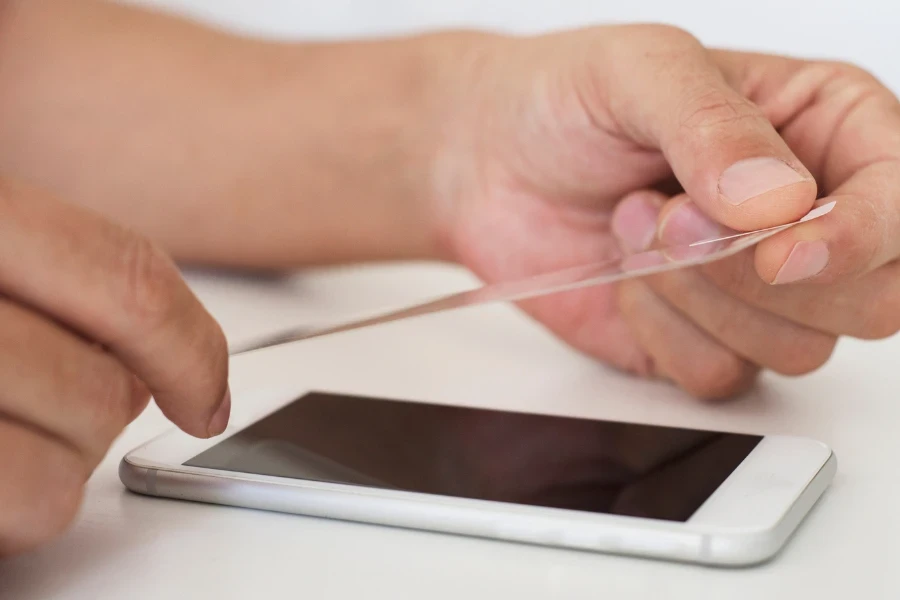
Thickness is another factor that affects a screen protector’s ability to guard the device. So, businesses must find the perfect balance to offer the most effective screen protectors, ensuring they’re not too thin or thick.
Overly thick screen protectors may affect the device’s touch sensitivity, while thinner glass won’t protect from scratches and drops. As a rule of thumb, consider stocking up on screen protectors with a mid-range thickness, typically ranging from 0.3 mm to 0.5 mm.
Final words
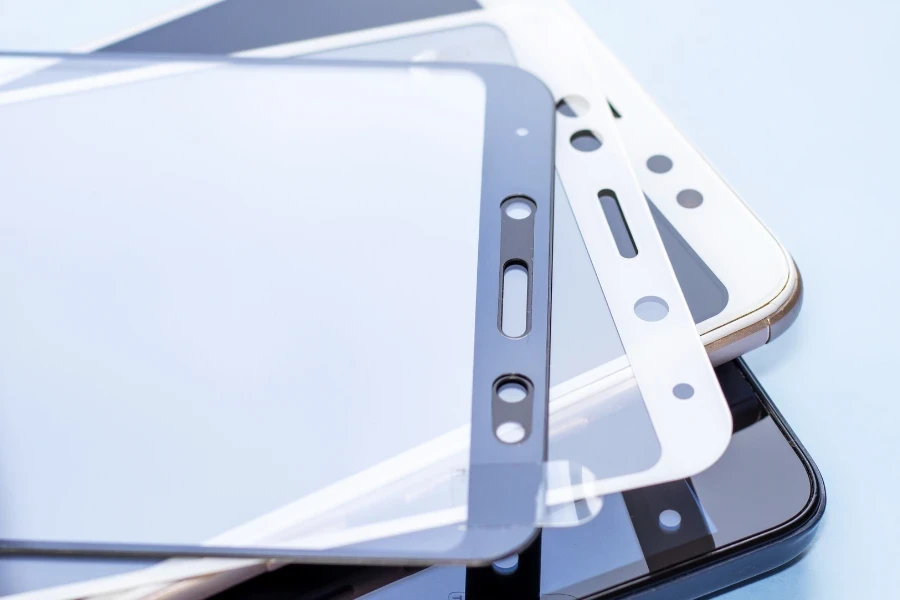
As long as smartphones are in use, screen protectors will always have a place in the homes, offices, and spaces of many people worldwide. After spending a fortune getting them, consumers don’t want to scratch, damage, or crack their devices, making screen protectors a highly profitable market.
If consumers want scratch resistance, they can get PET/TPU screen guards. What if they want privacy? They can opt for a tinted (privacy) screen protector.
Whatever they want, there’s a screen protector for them, and businesses can offer the right ones by following the tips provided in this 2024 guide.



